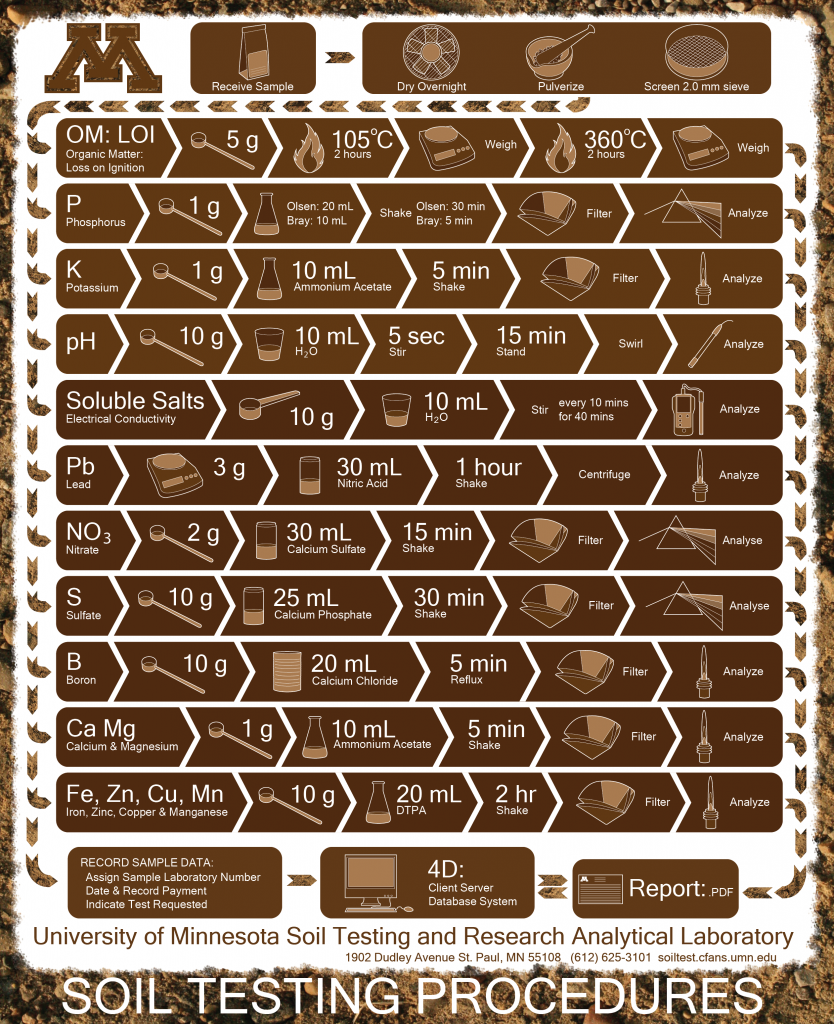Soil Testing Instrumentation
We use a variety of instruments to analyze soil samples including:
- atomic absorption spectrometers;
- Inductively Coupled Plasma Spectrometers (ICPs);
- Lachat Flow Injection Analyzer;
- combustion analyzers;
- colorimeters; and
- general laboratory equipment.
Sample Preparation
At the laboratory, each sample is assigned an identification number, transferred to a paper bag, and then placed in a metal tray. Every 12th sample is a quality control sample, either a check sample of known chemical properties to ensure accuracy or a duplicate sample to evaluate laboratory precision.
Samples are dried rapidly under forced air, at room temperature not exceeding 75oF.
Dried samples are crushed with a mechanical grinder and passed through a stainless steel 10-mesh, or 2.0-millimeter sieve to remove stones and unwanted debris.
Routine Soil Tests (The Regular Test)
- Estimated soil texture and Organic Matter
- Soil pH (1:1 suspension)
- Lime requirement (Sikora buffer index)
- Extractable phosphorus (Bray-1 extractant, Olsen-sodium bicarbonate extractant)
- Available potassium (ammonium acetate extractant)
- Organic matter (%) (loss on ignition) and estimated texture
Soil Tests Available Upon Request
- Soluble salts (electrical conductance, 1:1 soil suspension, saturation extract)
- Extractable sulfur (calcium phosphate extractant)
- Extractable zinc (DTPA extractant)
- Extractable zinc, copper, iron, and manganese (DTPA extractant)
- Nitrate-nitrogen (0.01 M CaSO4 extractant)
- Exchangeable magnesium and calcium (ammonium acetate extractant)
- Hot water extractable boron (0.1 % CaCl2.H2O)
- Environmental Lead (1 N HNO3 extractant)
- Nutrient Management Phosphorus (Olsen method)
Florist/Greenhouse Tests
Reference
Recommended Chemical Soil Test Procedures for the North Central Region. 1988 (revised 2015). North Central Regional Research Publication No. 221 (Missouri Agricultural Experiment Station SB 1001).
